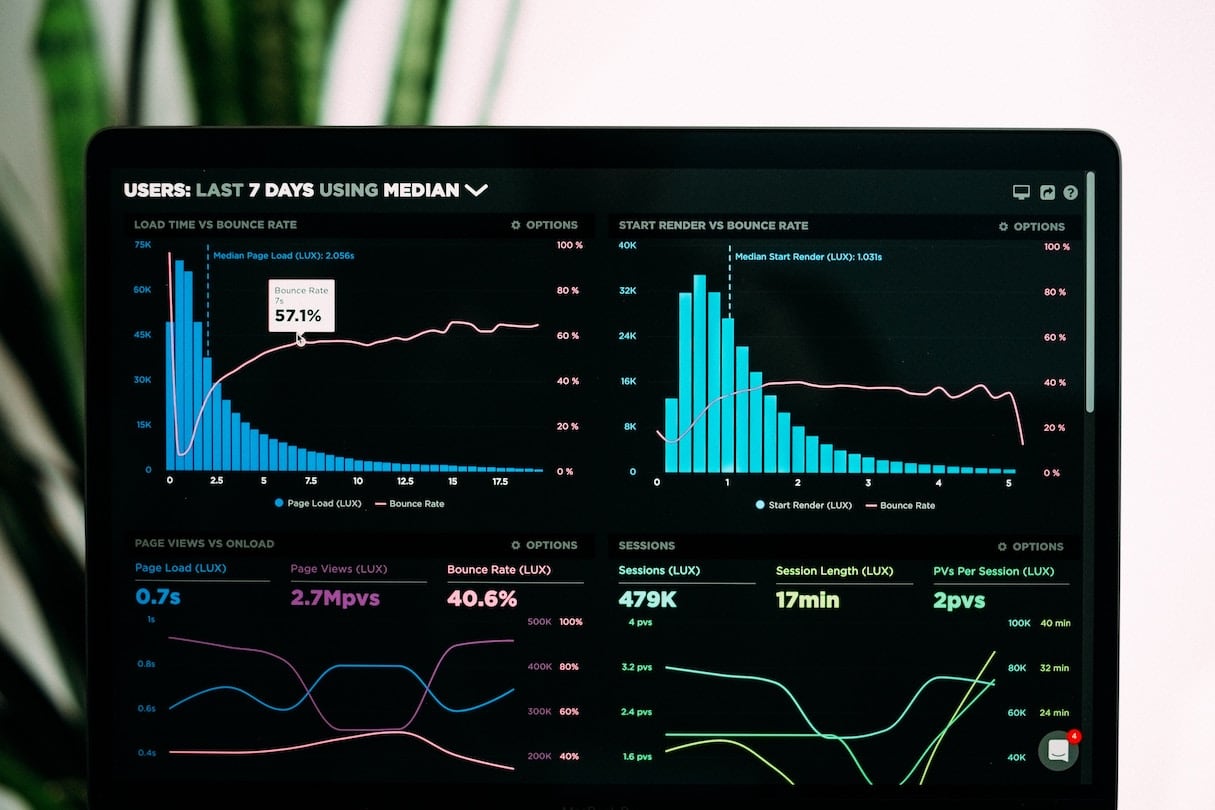Launching a new brand is one of the most exhilarating business projects to work on.
But it can also be one of the most challenging.
Clayton Christensen, a Harvard Business School professor and the author ofthe pioneering book The Innovator’s Dilemma, reports that each year, more than 30,000 new consumer products are launched, and 80 percent of them fail.
Will your clients be one of the 20 percent?
It's possible, although helping clients get their new brand off the ground in a cost effective way requires a large degree of fortitude. Our performance marketing agency powers marketing for some of the best, most disruptive direct to consumer brands in the world, and many are Shopify merchants, not unlike your clients. We know exactly what it’s like to scale brands that are incredibly cost conscious with respect to acquiring new customers, many of whom are first timers to the ecommerce world.
Along the way, we’ve learned many profitable strategies and tactics for doing so, specifically by advertising on Facebook/Instagram and Google. We’ve seen firsthand how each platform can be instrumental in growing a business, because for new brands, Facebook and Google represent the majority of incoming revenue.
Today I’ve outlined methods for you (and your clients gearing up for launch) to gain learnings quickly and achieve your goals. We’ll start high level with assumptions and challenges, and then talk more specifically about building your audience and capitalizing on it so the brand can grow baby, grow!
New brand assumptions: time and comparison
First, we need to outline the unique assumptions that new brands have, like the issues of timing and context. For example, if a brand is scheduled to launch six months from today, that means the founders have been working on this idea for the past six to twelve months, at minimum. Having worked with hundreds of startup founders before, it’s probably more than that.
Because of this history, it’s common for owners and founders of new companies to be energized and ready to make waves immediately. This will certainly come through on your kickoff calls and early meetings, and that’s a good thing. That motivation and executive vision is critical to inspire the team and fuel company growth.
However, don’t let it tip the budgeting scales simply for the sake of speed. It’s understandable that the company founder wants to see their six months or even six years of work come to fruition right away. But no matter how excited they (and you) are about launching the brand, keep everyone’s expectations at bay. New companies love to call their marketing team or external agency seven hours after going live and ream them for not having any conversions yet.
Another assumption with new brands is the comparison trap.Most new brands will have some kind of pitch deck, including expensive, robust market research about their vertical. Now, this can be useful to dictate strategy, but don’t over rely on it. SharkTank, Silicon Valley, and other cultural institutions promoting startups have convinced every new entrepreneur that all they have to do is measure the size of the biggest player in the space, assume their conversion rate is five percent, capture a small slice of that market, and their brand will guarantee to get traction. Sounds so easy, right?
Indeed, the need to forecast is understandable, especially if your client is trying to raise money or is being evaluated by a board of directors on a weekly or monthly basis, meaning they’ll likely need to explain where marketing spend is allocated. But overall, that process is flawed and isn’t the most dependable source of market research to validate the addressable market of a new brand.
A smarter source of research comes from the power of machine learning via paid advertising. Next, we’ll talk about how to use paid media channels to garner true market insights and build your brand’s first audience.
You might also like: Truth In Advertising: How to Differentiate Your Marketing Agency Through Radical Transparency.
New brand challenges: data, data, data

The unique challenge that new brands have is the fact that there is no data yet. Data is a broad term that, in the digital marketing world, often references several different key pieces, i.e., traffic on the site, actions taken on the site, learnings on the ads, and the targets. When you haven’t launched the brand yet, there’s nothing against which to benchmark.
Because of this data challenge, the first several months of building digital marketing campaigns for a new brand on these platforms are the most difficult. A brand’s existence during that time needs to essentially be treated as marketing research and development. The purpose is to try and garner as much valuable data as possible, and then use that information to build audiences, run tests, get market feedback, and use all of that to build your overall customer experience.
Remember, a new brand will not be profitable right out of the gate. Preparing for that expectation will lead to longer term success than assuming it will be. Structuring your campaigns for building initial brand awareness will better set you up for long term success, rather than gunning for conversions immediately. By casting a wide net and optimizing for top of funnel metrics, you’ll build a middle of the funnel audience that you can push down the funnel to convert.
Let’s dig into the details of those campaigns.
Running a lead generation campaign
When we work with new brands, our recommendation is often to run a lead generation campaign. It’s one of the cheapest ways to garner leads because a) people don’t have to leave the platform to complete a form, and b) Facebook autofills the form fields, making the filling out process even quicker. These leads can not only help grow the scale of your email campaigns; they can also be used as a lookalike source audience.
Several weeks before a launch date, you begin winning email addresses that can not only be used in actual email marketing campaigns, but can also be used to build an initial lookalike audience within your prospecting efforts. The remainder of your prospecting efforts are reliant on the interests and demographic based targeting options you have within the platform.
Please note, your vertical will change this initial research. You may find the test audience is aligning very well. But other times it might be harder. The big picture to keep in mind is the marketing funnel. You’re starting with zero data, and over time, you’re making your way down the funnel in terms of the source audiences you can use for lookalikes. After a couple of weeks or even after a few days with a minimum budget, you will likely have garnered enough traffic of one thousand individuals to create a lookalike based off of site visitors. At that point, you’re starting with the least qualified audience you can have, but it something. You can work your way down to more qualified audiences like viewed product.
Once you get to one thousand people, then you have the ability to build a lookalike audience. This is a powerful Facebook prospecting tool that can find users similar to a specified source audience. That source audience could be anything: users on your website, purchasers, repeat purchasers, etc. The more qualified, the better—for example, a lookalike using a source audience of people who purchased in the past will have a higher conversion rate than one using a source audience of people who visited the site.
The key is, the lookalike audience requires approximately 1,000 people in order to have a statistically significant sample to match other similar profiles. It’s harder to collect 1,000 past purchasers than 1,000 site visitors. Humans learn from more conversions, but so do the machine-learning advertising algorithms. By tracking the profiles of those who convert, they can quickly form connections about the user before the advertiser.
For instance, the algorithm may notice 45 year old women from Toronto are more likely to convert, even if the audience is all ages and gender in America. The algorithm will then serve more impressions toward more profiles similar to what’s been working. As you’ve likely guessed by this point, conversions need to happen first before the machine learning can improve.
You might also like: How to Bring Disruptive Thinking to Your Agency’s Clients.
Considering average order value
Another factor that will affect the first several months after launching a new brand is vertical. One of our clients took three months to reach their goals, but only because their average order value was relatively low. Another client whose product sold at a higher price point, say $500 per item, took much longer to get return on ad spend because they had less data. Only after several months and with a couple hundred purchases and a significant number of people who added to cart, both of which can be combined into one lookalike audience, did we get accurate data.
For that reason, your clients need to be crystal clear on their average order value. This has a profound effect on how long the brand launch will actually take. If that number is high, then you’ll want to optimize either add to carts or viewed content for the first one to two months. You don’t want to dive straight into optimizing for conversions, because you’re not going to generate enough volume at that early stage, at least not at the rate you’d like to. We recommend you optimize for lesser events and build up your data, and then slowly work your way down the funnel in terms of optimization.
And on the flip side, if you have a low average order value with a product that’s relatively cheap, you can start by optimizing into conversions immediately with a new prospecting campaign.
It’s understandable that you and the brand you’re launching wants all digital marketing to be profitable within months or weeks of launch. But without the learnings or retargeting pools, instant profitability is a tall order. Investing a few months for a learning period is a more conservative approach, and you can use modern performance marketing channels to do what used to take companies years and years to learn.
Action plan for launch

Now that we’ve outlined assumptions and challenges, and helped you build your audience in those first several months of launching, we wanted to leave you with an action plan of strategies and tactics to use as the brand moves forward.
-
Set realistic, data driven goals. Cost per acquisition is a smart place to start. Setting a marketing goal should start with looking at profitability and expected earnings, and working backwards to determine the estimated cost of ads that would still lead to those target profits. Then, of course, realize that those goals might not be viable for a new company initially, and plan accordingly.
-
Invest in non branded search. As a new brand, your client has to be very meticulous in terms of where they’re allocating their spend. Generally speaking, Facebook’s paid advertising is going to be the majority of where your prospecting efforts are going to come from, as illustrated with our recommendations above. Google, on the other hand, is differently useful. Branded search is going to be relatively low cost, but should be implemented from day one. Ideally people are going to be searching for that brand more and more as time goes on and the company grows.
-
Focus on performance creative. We recommend a fairly robust pipeline of paid ads. New brands have to be willing to test all different types of ad formats and ad times. Carousels, statics, videos, gifs, collections, you name it. Try to find some evergreen creative that you can use going forward, but also put thought into what ad type the audience will resonate with the most. If your team doesn’t have the production expertise or capabilities to build performance creative based on industry standards, make sure you partner with a creative shop or studio that does.
-
Leverage public relations. It’s hard to get press when your brand hasn’t launched yet. But if your client is fortunate enough to have early media attention for their products, you’ve already earned a critical piece of credibility. Social proof is a proven tactic to cut through the noise of the social media feed and build trust before a user ever clicks on your ad. Creative with strong social proof statistically performs better in ads. Layering social proof from an influential third party onto an ad can sustain that positive lift.
-
Product reviews rule. To give your client’s brand a simple and effective way to draw a connection, employ reviews liberally. Tactically, we recommend using copy from press as a powerful way for new brands to build credibility while they are still building awareness. We often see that copy featuring press is the best for companies that are building their brand. Positive reviews are a great introduction to the brand and can help push a decision for remarketing audiences that need some final validation before committing to conversion.
- Budget intelligently. There’s no reason to overspend in the beginning. New brands are not going to see the types of returns that they want to be seeing because nobody knows the company yet. Your conversion rates are going to be trash, regardless of how much traffic you’re paying for. Customers are not likely to purchase a company’s products right out of the gate, unless your client is a startup unicorn—which, despite their highest aspirations, is generally not going to be the case. Every brand thinks they’re going to be, but it’s more often wishful thinking than it is accurate forecasting. As they say in the rock in roll world, all the hits are flukes. Our average recommendation to new brands using paid advertising as part of their launch strategy is to not spend more than $15k/month in the beginning.
You might also like: Facebook Marketing: Six Steps to Auditing Low Performing Facebook Ads.
Grow wisely
Understandably, launching a brand new brand is an uphill battle.
But can you imagine how hard it would without the aid of digital marketing?
Thanks to Facebook/Instagram and Google, your research development efforts in the first several months of the company’s existence can be measurable. With the proper pixel placement, a user can understand the exact efficacy of their advertising efforts. Good luck finding billboards that tell you how they’re performing! Similarly, digital marketing makes the launch very testable. Trying different ads against different audiences will unlock learnings about your business. It has a relatively low barrier to entry in order to reach an audience at a national scale.
Most importantly, digital marketing is effective. Our agency is proud to have seen newer brands rely on it as a major channel for advertising and scale with it.
Yes, all new businesses face unique assumptions and challenges with the lack of data on their account. But by setting realistic goals commensurate with their average order value, testing diversely, building an audience quickly, and launching cheaper traffic-oriented campaigns early, your new brand will have the best chance of being one of the 20 percent of new brands that not only survives, but thrives.
Grow baby, grow!
What tools do you use to gather data on new brands? Share your thoughts in the comments below.








